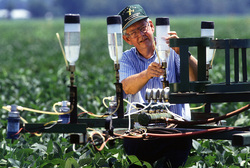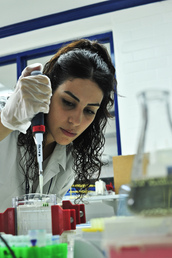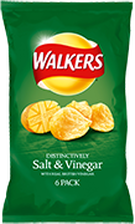It's all in the Flavor
How do Potato Chips & Crisps Companies do it?

Natural Flavors
If you have ever wondered how flavor additives affect food, Potato Chips and Crisps are a good starting point.
In the US, the Food and Drug Administration understandably expects that natural flavors come from a natural material. However, that is not to say the statement is unequivocal.
It invariably means that flavors are developed from plant or bacteria by-products, or chemically treated naturally occurring molecules. Or, in other words, food scientists are unleashed to weave their magic to enhance flavors and taste.
So, if you have a naturally flavoured foodstuff it may well have started out as a bacterial protein.
However, the aforementioned ‘magic’ is expensive and the results are often inconsistent.
If you have ever wondered how flavor additives affect food, Potato Chips and Crisps are a good starting point.
In the US, the Food and Drug Administration understandably expects that natural flavors come from a natural material. However, that is not to say the statement is unequivocal.
It invariably means that flavors are developed from plant or bacteria by-products, or chemically treated naturally occurring molecules. Or, in other words, food scientists are unleashed to weave their magic to enhance flavors and taste.
So, if you have a naturally flavoured foodstuff it may well have started out as a bacterial protein.
However, the aforementioned ‘magic’ is expensive and the results are often inconsistent.

Artifical Flavors
Those food science folk obviously have a far greater role to play in the world of artificial flavors.
They are what you would presume them to be; the result of laboratory experiments involving taste bud stimulating chemicals.
And by controlling each step of the flavor manufacturing process, the scientists are able to materialise more accurate and consistent results. This means it is also usually less expensive.
Natural v Artificial
It would be easy to presume that natural flavouring would be better for you than artificial flavouring. In most cases, this is a misconception. The human body can rarely tell the difference.
Those food science folk obviously have a far greater role to play in the world of artificial flavors.
They are what you would presume them to be; the result of laboratory experiments involving taste bud stimulating chemicals.
And by controlling each step of the flavor manufacturing process, the scientists are able to materialise more accurate and consistent results. This means it is also usually less expensive.
Natural v Artificial
It would be easy to presume that natural flavouring would be better for you than artificial flavouring. In most cases, this is a misconception. The human body can rarely tell the difference.

Case Study: Salt & Vinegar Flavor
One of the world’s most popular flavors is usually produced in one of two ways:
One process involves the spraying of a thin layer of vinegar onto maltodextrin or another modified food starch. Maltodextrin is a slightly sweet, flavorless powder that is derived from starch. Maltodextrin has a porous structure that is able to absorb a great deal of Vinegar flavouring. The mixture is then converted into a powder.
A second process will feature the use of sodium diacetate. A 1 to 1 ratio of sodium acetate and acetic acid is combined to provide a dry mixture.
Other Flavors
As discussed above, artificial flavors are usually derived from organic compounds, from which flavor is extracted and studied. Once the structure of the molecule that produces the flavor is discovered a synthetic, or artificial substitute, can usually be made.
Some examples of some of the most famous non-Chips or Crisps flavors:
Butter - Diacetyl
Banana - Isoamyl acetate
Cinnamon - Cinnamic aldehyde
Grape - Methyl anthranilate
Orange – Limonene
Pear - Ethyl-2,4-decadienoate
Pineapple - Allyl hexanoate
Sugar - Ethyl maltol
Vanilla - Ethylvanillin
One of the world’s most popular flavors is usually produced in one of two ways:
One process involves the spraying of a thin layer of vinegar onto maltodextrin or another modified food starch. Maltodextrin is a slightly sweet, flavorless powder that is derived from starch. Maltodextrin has a porous structure that is able to absorb a great deal of Vinegar flavouring. The mixture is then converted into a powder.
A second process will feature the use of sodium diacetate. A 1 to 1 ratio of sodium acetate and acetic acid is combined to provide a dry mixture.
Other Flavors
As discussed above, artificial flavors are usually derived from organic compounds, from which flavor is extracted and studied. Once the structure of the molecule that produces the flavor is discovered a synthetic, or artificial substitute, can usually be made.
Some examples of some of the most famous non-Chips or Crisps flavors:
Butter - Diacetyl
Banana - Isoamyl acetate
Cinnamon - Cinnamic aldehyde
Grape - Methyl anthranilate
Orange – Limonene
Pear - Ethyl-2,4-decadienoate
Pineapple - Allyl hexanoate
Sugar - Ethyl maltol
Vanilla - Ethylvanillin


